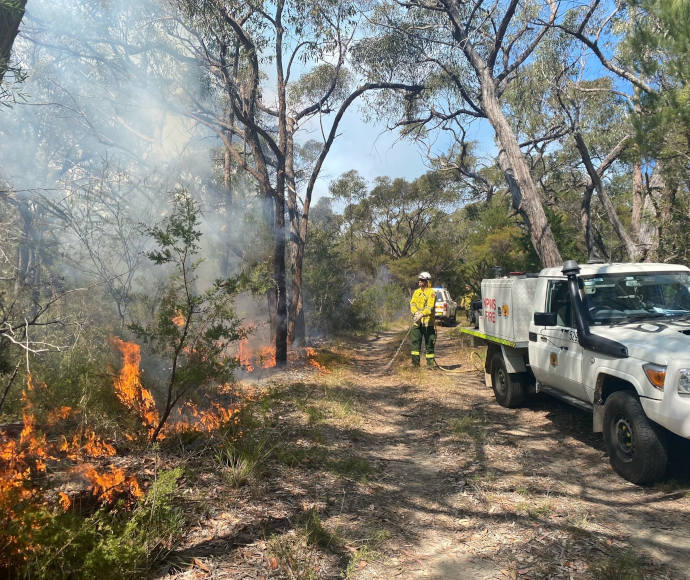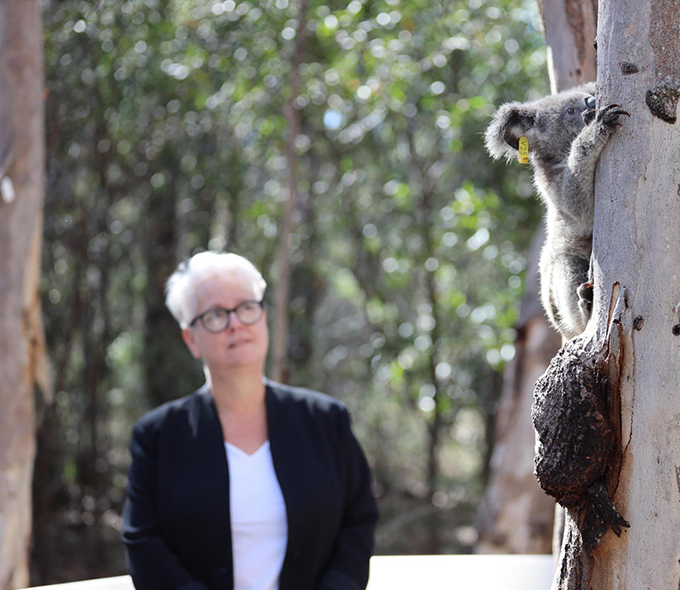.jpg)
- The Miles Government is implementing a recovery action plan for the critically-endangered Capricorn Yellow Chat.
- The Capricorn Yellow Chat is one of Queensland’s rarest birds. It was once thought to be extinct and is now found only in three locations in the Capricorn region.
- The action plan aims to protect and conserve the species’ habitat and ensure its survival into the future.
The Miles Government is fighting to save one of the state’s rarest endangered birds.
Environment Minister Leanne Linard said the Department of Environment, Science and Innovation was implementing a recovery action plan for the Capricorn Yellow Chat.
The small bird, which weighs around 10 grams, was once thought to be extinct, however a small population was discovered in Curtis Island National Park in 1991.
Two further populations have since been found – on private land in the Broad Sound region (140km north of Curtis Island) in 2003 and the Fitzroy River delta (40km west of Curtis Island) in 2004.
The species is listed as Endangered under the Queensland Nature Conservation Act 1992 and Critically Endangered under the Commonwealth Environmental Protection and Biodiversity Conservation Act 1999.
The recovery action plan provides the strategic management direction for the recovery of the bird over the coming 10 years, with goals including to:
- maintain the three populations and improve population trends so the Capricorn Yellow Chat can survive in the wild in the longer-term
- maintain existing habitat critical to the species’ survival
- improve habitat condition for the species, including improving the availability of natural resources the bird needs to survive
- address knowledge gaps about the Capricorn Yellow Chat, and
- improve engagement of key stakeholders, including First Nations peoples who have country that overlaps with the species’ habitat.
Known threats to the Capricorn Yellow Chat include their small population size, climate change, changes in habitat caused by dams and levee banks reducing the overland flow of freshwater into wetlands, feral pigs, inappropriate cattle grazing, and industrial expansion that has the potential for further habitat loss.
Conserving the Capricorn Yellow Chat is a collaborative effort by several partners including the Department of Environment, Science and Innovation, Fitzroy Basin Association, BirdLife Capricornia and CQUniversity, who are undertaking population and habitat condition surveys, feral pig and herbivore control, and weed management in locations across the species’ distribution.
Quotes attributable to the Minister for the Environment and the Great Barrier Reef and Minister for Science and Innovation, Leanne Linard:
“The Miles Government is strongly committed to protecting our environment and the wide variety of species who call it home.
“The recovery action plan provides a road map for our partners to join with us in adopting a holistic approach to ensure the Capricorn Yellow Chat’s survival.”
Quotes attributable to Member for Rockhampton, Barry O’Rourke:
“It’s going to take a multifaceted approach to address the many threats to this beautiful little bird’s survival.
“It’s great that we have conservation organisations, the local community, our local university and First Nations groups coming together to work with the government on the very important task of ensuring this species’ survival.”
Quotes attributable to Member for Keppel, Brittany Lauga:
“It’s very special that the Yellow Chat is only found in parts of the Capricorn region but that means we need to work hard to protect its habitat so its population can grow.
“Protecting and restoring its natural habitat is crucial for its long-term conservation, along with managing the impact of climate change and introduced predators.
Quotes attributable to Capricorn Yellow Chat working group chair, Allan Briggs:
“BirdLife Capricornia and researchers at CQUniversity have been working over the past 20 years to identify population locations, monitor populations, and identify the ecology, breeding behaviour, threats and genetic relationships of the Capricorn Yellow Chat.
“Funding from Fitzroy Basin Association and Greening Australia supported these activities.
“In 2021, the Capricorn Yellow Chat Working Group was established with support from the Queensland Department of Environment, Science and Innovation, and involved stakeholders including local councils, landowners and Traditional Owners.
“Further work has now resulted in the development of a Recovery Action Plan which is another step forward in securing the future of the Capricorn Yellow Chat.
“When not-for-profit organisations, academics, NRMs, volunteers and government work together much better outcomes can be achieved for threatened species.
“Protecting the Capricorn Yellow Chat is not only vital for the preservation of biodiversity but also for maintaining the health and functioning of its ecosystem and its conservation is imperative for maintaining ecosystem resilience in the face of ongoing environmental changes.”







